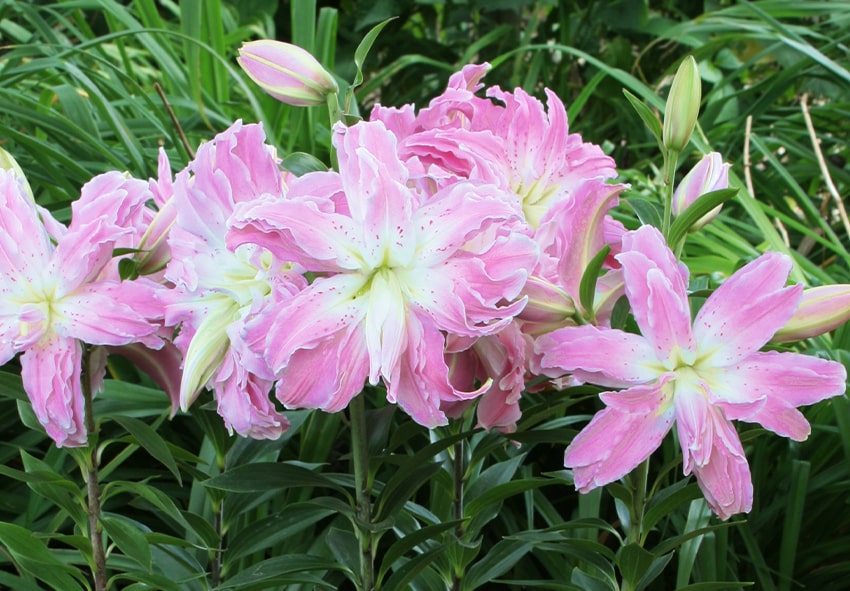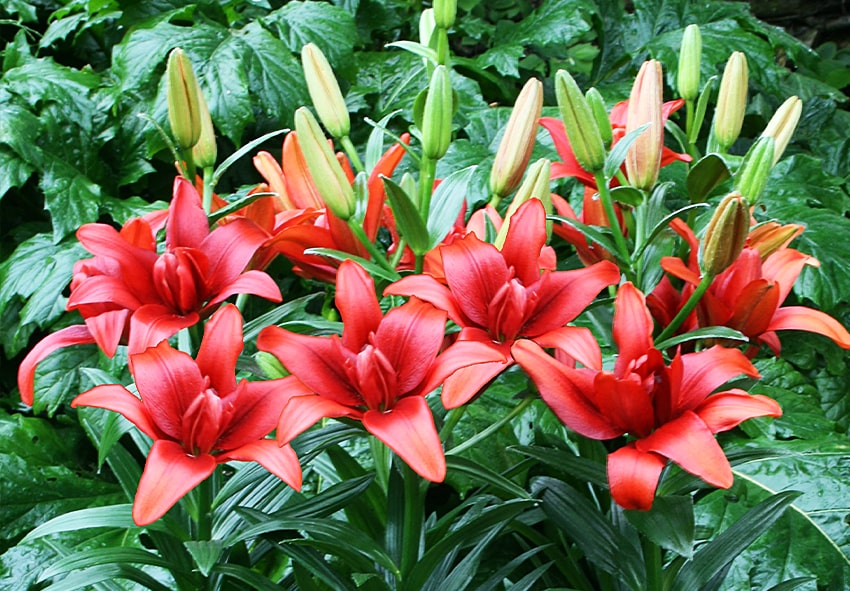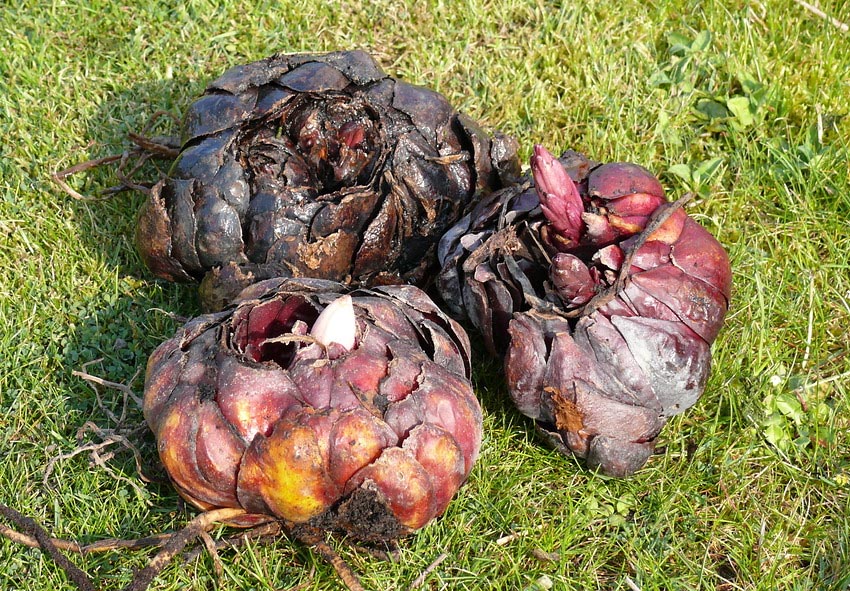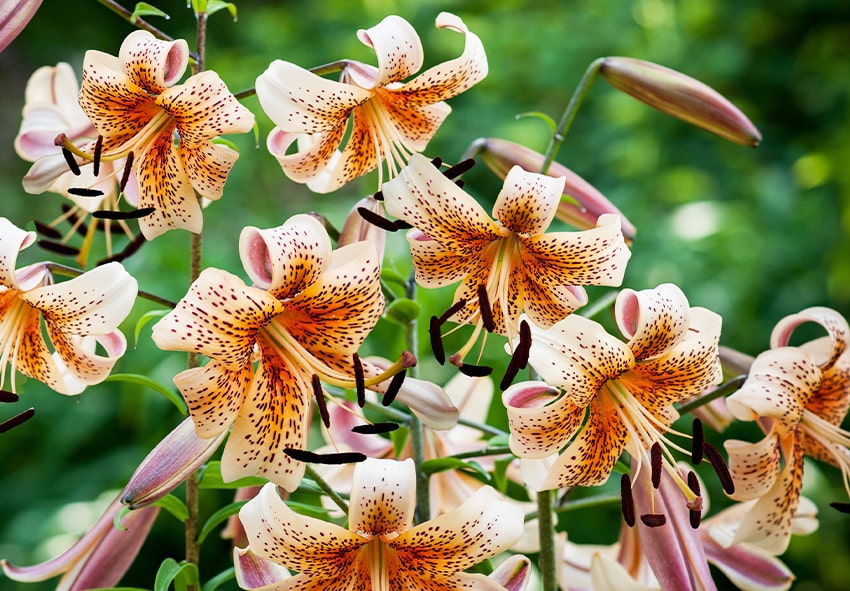Lilies are flowers that are mainly grown from bulbs, although there is also a way to grow lilies from seeds. In this case, plants get sick less and acquire resistance to viruses and pests. But for most flower growers, this method will seem too harsh, because growing lilies from seeds require not only patience but also time. It can be five to six years from the time you sow the seeds to flowering.

Therefore, we will only talk about growing lilies from bulbs. And planting lilies is the main thing here as this is one of the main stages in the process. Although these flowers are considered less picky about location than, for example, tulips, planting errors can result in lilies not blooming or even rotting in the bulb.
Where to Plant Lilies
Lily plants should grow in one place for at least four to five years. So choose a permanent site for the flower bed right away. The soil at the place where the lilies will be planted must be well-drained. Freely pass water during irrigation, so that moisture does not stagnate. The soil can even be half sandy or loamy — lilies do not like heavy soils.

Care of lilies before planting — in order for you to admire the beautiful, large flowers, the land must be fertile, not empty. So a few months before planting, it is advisable to apply organic or mineral fertilizers to the soil. It is also advisable to fertilize the soil when the first shoots of lilies appear in the spring.
Planting Lilies in the Garden
The main thing you need to know about lily plants is that you are not planting them for a year, or even two. The bulbs of these flowers should grow in one place for about four to five years, gaining strength. Annual digging will weaken them, and as a result, in the first year after planting, the flowers are smaller than in subsequent years.
When to Plant Lily Bulbs in Ireland
There are two periods when to plant lily bulbs in the ground. These are autumn and directly at the beginning of the growing season in spring. Many gardeners prefer to do this in the fall to achieve earlier flowering. Such bulbs take root even before the onset of frost. In addition, if you bought planting material in the summer, then it may deteriorate by the following spring. Lily bulbs dry out faster than tulip bulbs, and loss of moisture sometimes results in the plant never blooming. If you notice that the bulb has lost its elasticity, immediately plant it in the ground.
How to Plant Lily Bulbs
Bulbs are planted to a depth of about 20 centimeters, but if they are too young and small, then the hole should be much smaller. So the lilies’ planting depth depends on the size of the lily bulb. It is a good idea to plant lilies in groups of three or four without leaving too much space between them. This way, it will turn into a very beautiful bouquet of lilies right in the garden. But do not forget that the bulb needs to grow, so even if they are planted this way, the gap between bulbs should be at least 10 to 12 centimeters. And if you also have a large-flowered variety, then it is better to plant them at a distance of 15 to 18 centimeters from each other.

The depth of planting of lily bulbs depends on their size. Large bulbs need a hole 15 to 20 centimeters deep. You also need to make an additional recess of 10 centimeters for the roots. Low-growing varieties are planted to a depth of 10 to 12 centimeters and an additional 10 centimeters for the roots.
How to Care for an Outdoor Lily Plant
Care during the growing season and flowering is as follows:
- Regularly loosen the soil around the bush.
- Keep the flower bed free of weeds.
- Moisten the soil regularly and moderately. Water only under the root. If water gets on the leaves, there is a chance of burns on the leaves.
- If the summer is very hot, a flower bed with lilies must be mulched. Mulching will prevent moisture from evaporating from the soil. For Asian hybrids, use pine bark or peat as mulching material.
- Top dressing. Lilies need two to three top dressings throughout the growing season.

How to Propagate Lilies
After observing your favorite plant, you can easily choose the propagation method that is more efficient, more convenient, and easier for a particular variety. If in doubt, you can try all of them.
- Propagation of lilies by daughter bulbs. Perhaps the easiest and most common propagation method. Everything is simple here: Dig up a bush after flowering, carefully separate the small bulbs, and plant them in a new place. If they are very small, it is better to plant them for growing on a separate bed or in containers.
- Propagation of lilies by dividing the nest. This differs slightly from the previous method. A large bulb of a lily can divide, forming two to three full-fledged (albeit not very large) bulbs that bloom the next year. After two to three years, the nest becomes quite large and can be divided.
- Propagation of lilies with scales. This method can also be attributed to the universal one — many types and varieties of lilies form bulbs on the scales. But its effectiveness depends on the specific plant. So, Asian hybrids reproduce by this method much better than Eastern ones.
Growing Lilies: Problem-solving
Several tips will help you avoid any problems with lilies:
- When planting lilies, follow the rule of plant height. Lower varieties of lilies should be planted closer to footpaths, and plants with long stems should be planted in the middle of the garden.
- The lily site itself should be sunny, but it is good if a shadow falls there during the hottest daytime hours. This prolongs the flowering time, as direct sunlight burns the flowers.
- Lilies really like it if their stems below are protected from the scorching sun, so you can plant some undersized flowers with them: daisies or violets. Their leaves will retain the moisture needed by the bulb.
- It is also possible, with the appearance of sprouts, to cover the soil around the lilies with a layer of organic mulch: needles, dry grass, or thin pieces of bark.
Read also Guide To Planting Dahlia Tubers.
Frequently Asked Questions (FAQs) about Planting Lilies
1. How do I choose the right location for planting lilies?
When selecting a location for planting lilies, it’s essential to consider their sunlight requirements. Most lilies thrive in full to partial sun, receiving at least 6 hours of sunlight daily. Ensure that the soil is well-drained and slightly acidic to neutral. Lilies prefer soil that’s rich in organic matter, so amending it with compost can be beneficial. Additionally, choose a spot protected from strong winds to prevent the tall lily stems from toppling over. Proper site selection is crucial for healthy lily growth.
2. What is the best time to plant lilies?
The ideal time to plant lilies is in the fall or early spring. Fall planting allows the bulbs to establish their roots before winter, while spring planting should be done as soon as the ground thaws. Planting earlier in the season ensures that your lilies have enough time to grow and bloom during the summer. It’s essential to plant lilies before the soil temperature becomes too warm, as they require a period of cold dormancy to thrive. This timing will vary based on your local climate, so monitor soil temperatures for the best results.
3. How do I care for Netherlands lilies once they're planted?
Lilies are relatively low-maintenance, but there are a few care tips to keep in mind. Water your lilies consistently to keep the soil evenly moist but not waterlogged. Mulching can help retain moisture and suppress weeds. Fertilize your lilies with a balanced, slow-release fertilizer in the spring, and avoid excessive nitrogen, which can lead to weak stems. Deadhead spent flowers to encourage more blooms, and in late fall, cut back the stems to the ground after they withered. This will help your lilies prepare for their winter dormancy.
4. Can I order Holland lily bulbs from your online store?
Yes, you can order lily bulbs from our online store. We offer a wide variety of lily species and cultivars, making it convenient for you to choose the ones that best suit your garden. When browsing our selection, you’ll find detailed information on each lily’s growing requirements, including sunlight, soil type, and hardiness zones. Ordering online allows you to plan your garden and have high-quality lily bulbs delivered directly to your doorstep, making the process of adding these beautiful flowers to your garden easier and more accessible.
5. How can I protect my lilies from pests and diseases?
To protect your lilies from pests like aphids, lily beetles, and slugs, consider using natural remedies or insecticidal soap. Regularly inspect your plants for signs of damage and take action promptly. To prevent diseases like botrytis or gray mold, avoid overhead watering, as wet foliage can encourage fungal growth. Plant your lilies with proper spacing to promote air circulation, and remove any infected plant material. Practicing good garden hygiene and addressing issues promptly can help keep your lilies healthy and thriving.
Published: 09.03.2022
